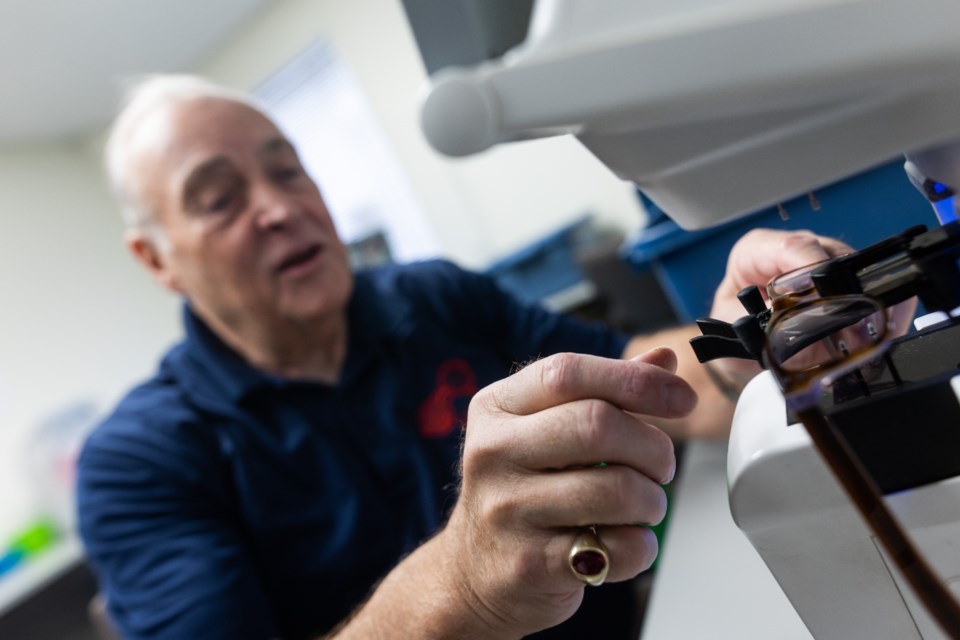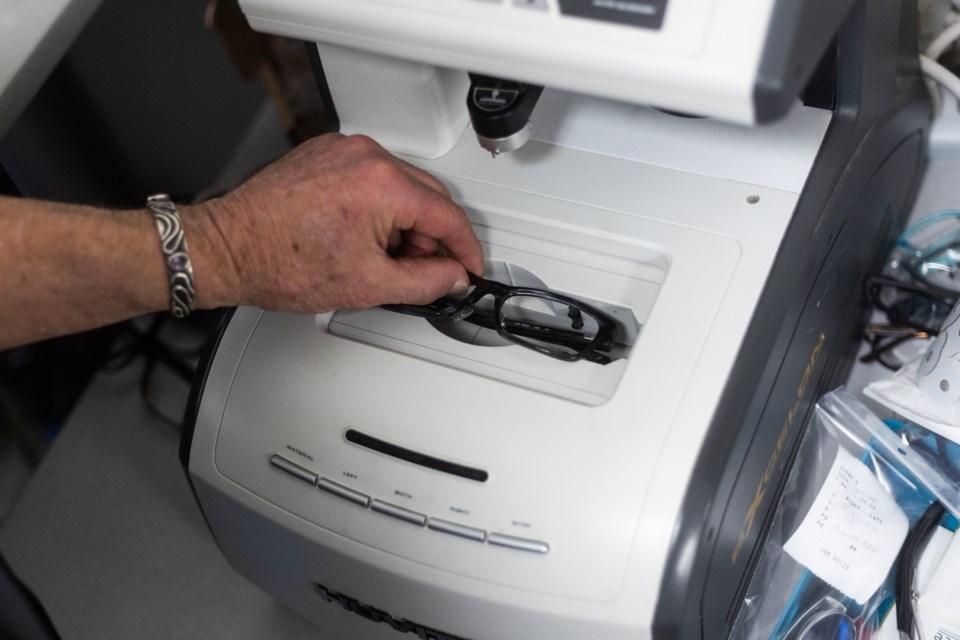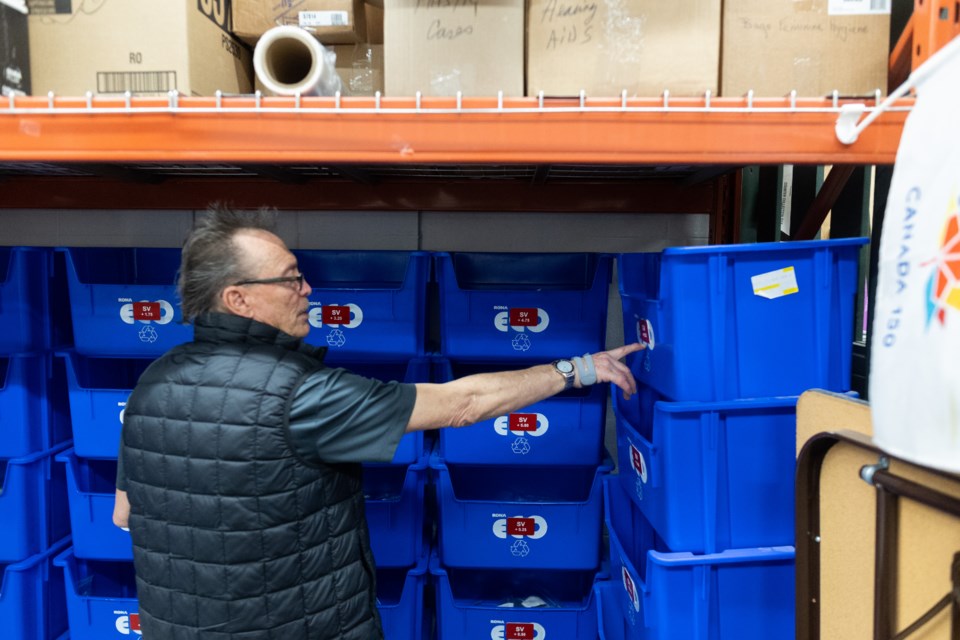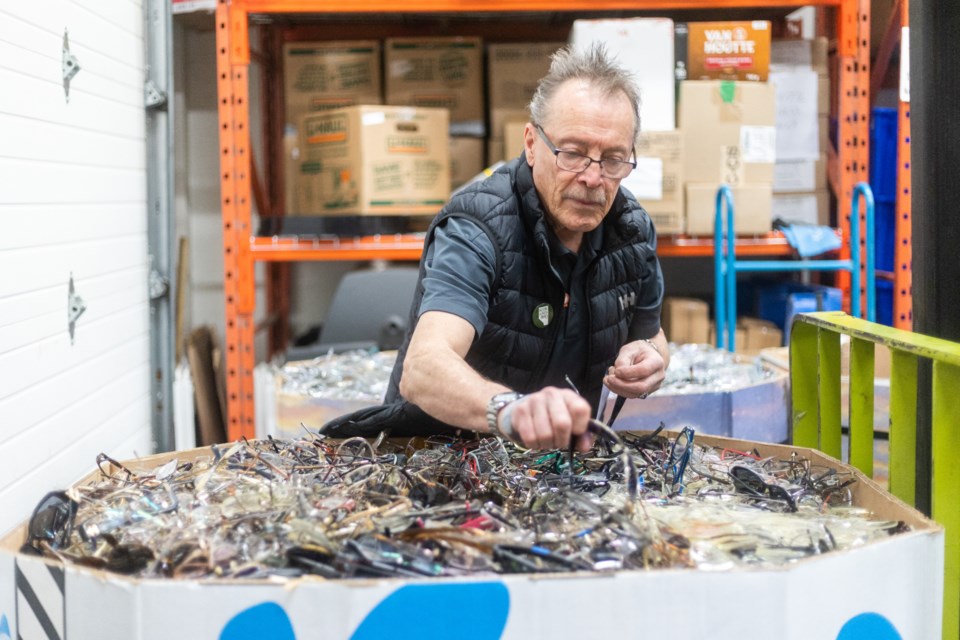BEAUTY is in the eye of the beholder, the old adage says. But what if you’re visually impaired and require eyeglasses to see it?
That’s exactly the case for about 2.2 billion people worldwide, according to the World Health Organization (WHO).
In almost half of these cases of people living with near or distance vision impairments, the WHO said, “vision impairment could have been prevented or has yet to be addressed.”
The Lions Club seeks to address some of the global issue with its eyeglass recycling centre.
Nestled in a northeast Calgary industrial park is an unassuming two-storey warehouse where magic happens. Led by Foothills Lion and chairman James Lee, the local Canadian Lions Eyeglass Recycling Centre (CLERC) has gifted 6.1 million pairs of eyeglasses to 103 countries, including South and Central America, Africa and South Asia.
“There’s a great need and as Lions, that’s what we do,” Lee said. “We respond to those needs. And as a human being, I’m invested in that. I want to help. I want to give back.”
The hundreds of thousands of pairs of eyeglasses sent out each year, however, would be caught up in Lee’s sorting section at the back of the warehouse by the bay door if it weren’t for dedicated volunteers and work parties.
“Without people like Jack (Busst), this wouldn’t happen,” Lee said. “There’s a lot of people that put a lot of big hours into this.”
Busst, a fellow Lion, has been volunteering for many years, but he said his retirement seven years ago led him to CLERC.
“I’ve been a volunteer in many organizations,” he said. “But, as a Lion, you can have a real effect.”

Starting by joining in on work parties, a marathon-like event where several volunteers move eyeglasses through each stage from sorting, measuring prescriptions, labelling and packaging, Busst was eventually dubbed vice-chair.
Lee explained that a typical work party would see up to around 35 volunteers at one time.
Recently, the Lion’s youth chapter, the Leos and the Boy Scouts spent a weekend organizing hundreds of donated pairs of sunglasses, eyeglasses, readers and even magnifying glasses that are donated from Albertans and businesses.
Lee said they were shown how to measure prescriptions by utilizing lens meters.
“Each machine cost about eight grand a piece,” Lee said of the small white machine that takes a digital reading of the glass and determines the values of the script.
When it’s done, it spits out a small receipt that is put into a little bag with the glasses which are now ready for sorting.
Lee said CLERC has four lens meters and another four are at the Calgary Correctional Centre.
The program there, he said, has made a pretty good impression on some of the inmates.
“There’s actually been a few inmates that have left the life of crime and went into the industry because they worked with it,” he said.
That program, Lee said, is thanks to Judge Brian Stevenson, who was elected in 1987 to serve as president of the International Association of Lions Clubs.
“He’s a judge here in town,” Lee said. “His joke to me is that he supplies the manpower and we supply the glasses.”
Busst said the machine is so easy to use, he even puts his four-year-old granddaughters to work when they’re visiting the 34th Avenue Northeast facility.
“And they can do it,” Lee chimed in. “It’s amazing.”

The glasses that come to the lens meter machines go through several steps before arriving on Busst’s table.
“The first stage of quality control is James when he goes through and does a raw sort,” Busst said.
That’s done back at the bay door where the donations first come in from optometrist offices, grocery stores, malls, churches, Legions and more. With a few bend tests, Lee quickly identifies potential keepers and those destined for a different fate.
That fate though, he explained, does not involve black garbage bags on curbsides, but rather what’s beyond the curb.
“I can just break that pair of glasses,” he said snapping a pair of flimsy plastic frames and tossing them to a bin on his right. “This is junk.
“We get 50-cents a pound for this stuff, U.S. That helps support us to buy all these boxes that we have here that’s used for shipping.”

Once 26 pallets of “junk” is collected, it goes to California.
“The coating on the glasses becomes reflective paint on the roads,” he added.
Lee said the frames are crushed and the metal, plastic and glass are sorted by magnets and machines.
“They suck that with a big magnet and then the glass shakes off here and the plastic shakes off here,” he explained.
The plastic pieces are used as a binding agent in concrete and the glass becomes paint, he said.
“All the cardboard boxes and bags that we see all gets recycled as well,” Lee explained. “That’s part of our alliance environmental commitment.
“To date, we’ve kept 180 semi transports out of the landfill.”
After the quality eyewear is separated, they are put into an industrial grade washer where they are sanitized.
Then, volunteers dry each pair by hand.
“They reject a bunch of glasses there,” said Busst, noting volunteers will see impurities or scratches on the lenses in the process.
An even closer examination is done at the final stage. “We check to see the lenses aren’t scratched or broken or the frames aren’t out or chewed on,” Busst said. “We try to make sure that whatever we send will last. I’ve talked to people who have gone on some of these missions and they said people will walk for two days to get a pair of glasses.”
Busst said in some cases — if you’re a teacher or a tradesman, for instance — that inability to see clearly could mean the difference between being able to work and not.
“That’s your livelihood,” he said.
Once the glasses have moved through all the stages, they’re sorted by prescription or lens type; sunglasses, readers, bifocals, etc., into boxes of 50 — plus some swag, Lee said, like lens cloths and little screwdrivers.
Six boxes of 50 are put together into a big Lions box and then it’s ready to go.
Lee recalled a time when he set up a woman from Indonesia with a proper pair of glasses.
“They worked perfect,” he said. “She got right up out of her chair and usually it’s a ‘wow’ moment, right?
“She gets up and she starts to cry. I say to her interpreter, ‘What’s going on here?’ She said, ‘Well, she’s seeing her grandkids clearly for the first time in 10 years.’
“Then she starts to laugh,” Lee continued. “The interpreter turns to me and says, ‘Well, after not being able to see clearly for the last 10 years, she’s discovered her husband isn’t quite as handsome as she thought.’”
As COVID-19 restrictions continue to ease, a sense of normalcy is returning to the CLERC warehouse, Lee and Busst said, and operations are ramping up.
For more information on the work CLERC does and how to get involved, or where to donate your old eyeglasses, visit CLERC.ca




